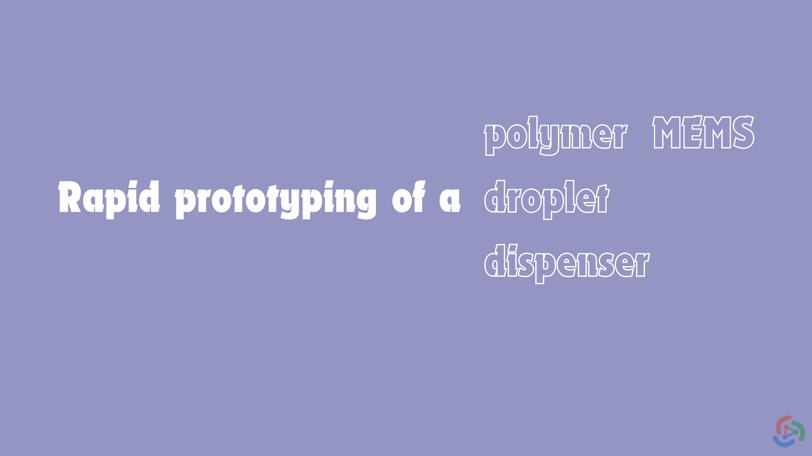Rapid prototyping of a polymer MEMS droplet dispenser


Rapid prototyping techniques were a very exciting application in MEMS and really revolutionized the polymer-based components. Recently published paper explains fabrication of a polymer MEMS droplet dispenser with the help of laser-assisted 3D printing, utilizing accuracy and efficiency to this technique. Details to be followed along with future possibility for the usage of these findings in the world of biosensors and microarrays are followed as a part of this blog article.
Surface functionalization is of particular importance for biosensors and microarrays and in fact, constitutes the first step in operating such devices. The current research has successfully reached this milestone using the 3D printing process called stereolithography, which creates an object by building layers on top of one another by polymerizing with the activation of a laser. The authors employed a Dilase 3D HR machine equipped with a 405-nm laser source. It was found to have an x/y resolution of 5 μm and a z resolution of between 5 and 100 μm. This resolution combined with a polymer surface roughness of only 2 μm and a writing speed of 50 mm/s makes possible an object size of up to 10 × 10 × 5 cm^3.
The core of the research is the MEMS droplet dispenser itself, which is cleverly designed around a microcantilever. The cantilever is provided with an integrated microfluidic channel and reservoir. The diameters of droplets in the microscale range can be delivered by this cantilever when it comes into contact with a surface. Researchers studied various cantilever shapes to determine their effects on successful droplet delivery. In addition, a magnetic base was integrated into the device to make manipulation easier.
The versatility of the stereolithography technique is further authenticated by the production of these cantilevers, indicating its potential as a cost-effective and flexible alternative for fabricating MEMS devices. The authors believe that this method could democratize access to MEMS technology and make it more accessible to a broader range of applications and researchers.
The polymer MEMS droplet dispenser developed here is a variation of the earlier silicon counterpart. Transitioning to a polymer-based system, as laser-assisted 3D printing enables, has several advantages. It saves time and the cost associated with prototyping, besides offering more design flexibility and the capacity for biofunctionalization-an important aspect for medical and biological applications.
The focus of the research goes far beyond fabrication. It encompasses full-scale development and characterization of the droplet dispenser, in particular applicability toward surface functionalization and biofunctionalization. Researchers did all sorts of testing of cantilevers in various shapes and geometries, from designs labelled V1 and V1M, the performance of which was to be accessed in pursuit of optimizing functionality.
It can be observed in the study that the loading and spotting process are very sensitive to evaporation, hence cantilever design and experimental conditions have more scope for optimization in order to attain reliable and efficient deposition.
Practical Implecations
Rapid prototyping of droplet dispensers, especially for surface functionalization applications
Fabrication of microarrays for biofunctionalization applications
Development of devices for biosensors and microarrays.
The study succeeds in demonstrating the potential of the cantilever-based spotting technique in depositing small droplets of liquid onto surfaces, with potential applications in fields as wide-ranging as biotechnology, material science, or nanotechnology.
The practical applications of the MEMS droplet dispenser are to be used in biosensing and biomedical research and other areas where the precision of dispensing droplets into a particular desired place may be expected.
Conclusion The study makes a strong case for the use of stereolithography in the rapid prototyping of polymer MEMS devices. Polymer MEMS droplet dispenser is one good example of advancements made in MEMS technology and gives a glimpse of a future where such devices are more accessible, customizable, and suited to a wide range of scientific and medical applications. The growth of MEMS will undoubtedly provide impetus for inventions across many disciplines. As these innovations continue to come to fruition, new discoveries and enhancements toward the approach we use in handling microscale technologies will be made.
Reference
